63 巻, 3 号
選択された号の論文の5件中1~5を表示しています
- |<
- <
- 1
- >
- >|
Original Articles
-
原稿種別: Original Article
2022 年 63 巻 3 号 p. 59-64
発行日: 2022年
公開日: 2022/08/31
PDF形式でダウンロード (2268K) -
原稿種別: Original Article
2022 年 63 巻 3 号 p. 65-69
発行日: 2022年
公開日: 2022/08/31
PDF形式でダウンロード (293K) -
原稿種別: Original Article
2022 年 63 巻 3 号 p. 71-75
発行日: 2022年
公開日: 2022/08/31
PDF形式でダウンロード (1039K)
Short Reports
-
原稿種別: Short Report
2022 年 63 巻 3 号 p. 77-80
発行日: 2022年
公開日: 2022/08/31
PDF形式でダウンロード (328K) -
原稿種別: Short Report
2022 年 63 巻 3 号 p. 81-84
発行日: 2022年
公開日: 2022/08/31
PDF形式でダウンロード (689K)
- |<
- <
- 1
- >
- >|
